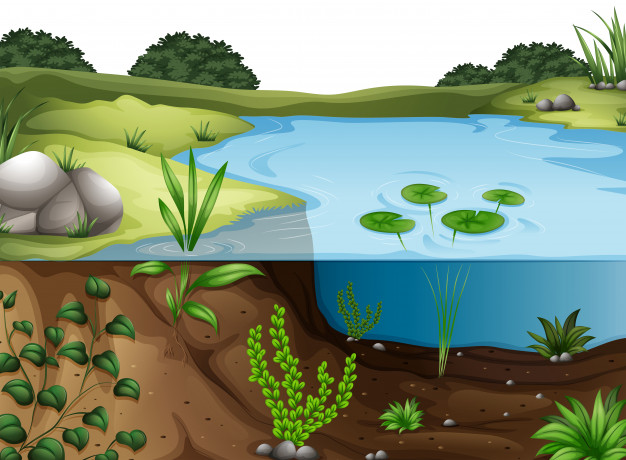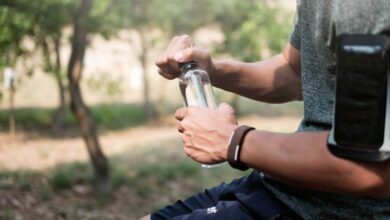Causes of Algae in Lakes

Algae is commonly found lingering inside of lakes and around the surface of rocks surrounding the lake. It can be healthy as long as it has a solid balance of moderation. However, it becomes an issue when it starts to overgrow and mat together. Algae can form and grow due to many environmental factors that allow them to thrive in their ecosystem. Algae can grow out of control pretty quickly if these factors work in combination.
You will be able to tell that algae are invading your lake by the color or smell of the water. You will know there are signs of algae if the water smells horrible or if it is a murky green or blue color. Algae has been a growing concern of lake owners for a long time. They can grow pretty quickly in heavy amounts in the right conditions and can cause harm to the ecosystem. Knowing the causes may help you understand whether it has become dangerous and how to handle it. Learn more from Karina Lakefront Maintenance about how to clean up lake algae at https://www.karinalakefront.com/lake-clean-up/how-to-clean-up-lake-algae/.
Here are a few ways that cause algae inside of lakes.
How algae are caused in lakes
Absorption of nutrients

One of the biggest causes of algae in lakes is the formation and distribution of nutrients. The nutrients can come from a variety of sources such as sunlight, fish, and outside sources surrounding the lake. Algae can typically absorb nutrients at a rapid pace to support their growth. Outside sources include lawn treatment products, pet waste, erosion, and many more.
The nutrients that cause algae to grow the most are nitrogen and phosphorus. These nutrients can be found naturally in water in most cases. However, an abundance of them can become problematic. Phosphorus can attach itself to the lake’s sediments to later be released and contribute to the growth of algae. You may be able to control the nutrients at their source. You could also try to balance them out to keep algae from growing out of control.
Pollution

Pollution is also a pretty big contributing factor to the growth of algae. Things such as sewage, chemical runoff, and other factors contribute to the pollution problem in lakes. Pollution can cause an abundance of nitrogen and phosphorus, which contributes to the growth of blue-green algae.
It can be difficult to reverse the effects of pollution in lakes and other bodies of water. Once a lake has been affected by pollution, it could take years for it to be set right again. The best you can do is try to handle the external sources of nutrients and make an effort to clean the lake as well as you can.
Stability of the lake

Sometimes algae tend to enjoy stable water conditions within a lake, especially blue-green algae. Water that experiences minimal turbulence is the perfect environment for algae to grow. It also helps if the flow of wind is low enough to keep the water moving at a slower pace.
When the water in a lake is more stable, it could cause thermal stratification. Thermal stratification is what occurs when lakes develop two different layers of temperature in the water. It is also brought upon by natural heat from the sun. The lower layer of the water will become cooler than the top layer.
The release rate of nutrients from sediments will also increase due to the reduction of oxygen. This will lead to the formation of the optimal growing conditions for blue-green algae.
Light

Algae can also grow as a result of direct or indirect exposure to light. Blue-green algae can grow really well in high light intensities that occur irregularly. If it is exposed regularly, then the population of blue-green algae will die out. Different forms of algae will typically go to different areas of light depending on how much sunlight that area is exposed to.
Algae also have the ability to adapt to different conditions regarding sunlight. Blue-green algae usually experience a much higher rate of growth than most other types of algae. Their ability to adapt and grow in many different conditions gives them an advantage when it comes to their development.
Turbidity

Turbidity is how one determines how clear or cloudy any surface of the water is. You will experience turbidity firsthand when you notice that it becomes difficult to see anything below the surface of the water. That is because tiny suspended particles and organic matter clump together in a column of water. This will cause the water to become cloudy and harder for the human eye to see any further into the water. Turbidity usually occurs from sediment or clay that naturally moves closer to the surface of the water from the very bottom of the lake. These particles usually move thanks to the help of rain or animals.
Solid particles such as animal waste or pollution-causing debris can also contribute to a lake’s level of turbidity. Low turbidity can create perfect conditions for algae to grow in some areas of the lake. Some areas will be able to experience more direct sunlight exposure thanks to low turbidity, and algae will thrive there. More turbid waters will typically be warmer than usual. This will give algae a good opportunity to grow as much as it possibly can.
The danger of rapid growth

Algae can become dangerous when it excels at the point of moderation. It makes the lake unsafe for you or animals to be around and it can even make the lake suffer from a toxic ecosystem. Algae is safe when it is balanced, but some algae species are hazardous and can become even more of a danger in numbers.
Conclusion
Knowing the causes of algae in lakes will help you have a better understanding of when it starts to become dangerous. You will also be able to learn how to handle it better. Most forms of aquatic life and plants are unable to survive in the dead zones caused by dangerous algae. It is best to avoid those areas as much as possible or get those areas cleaned.



